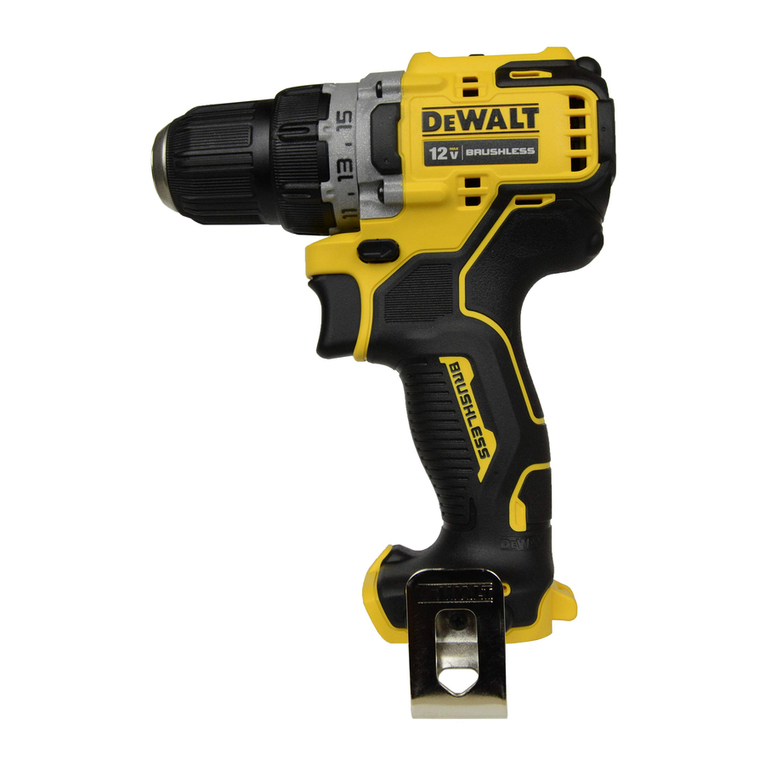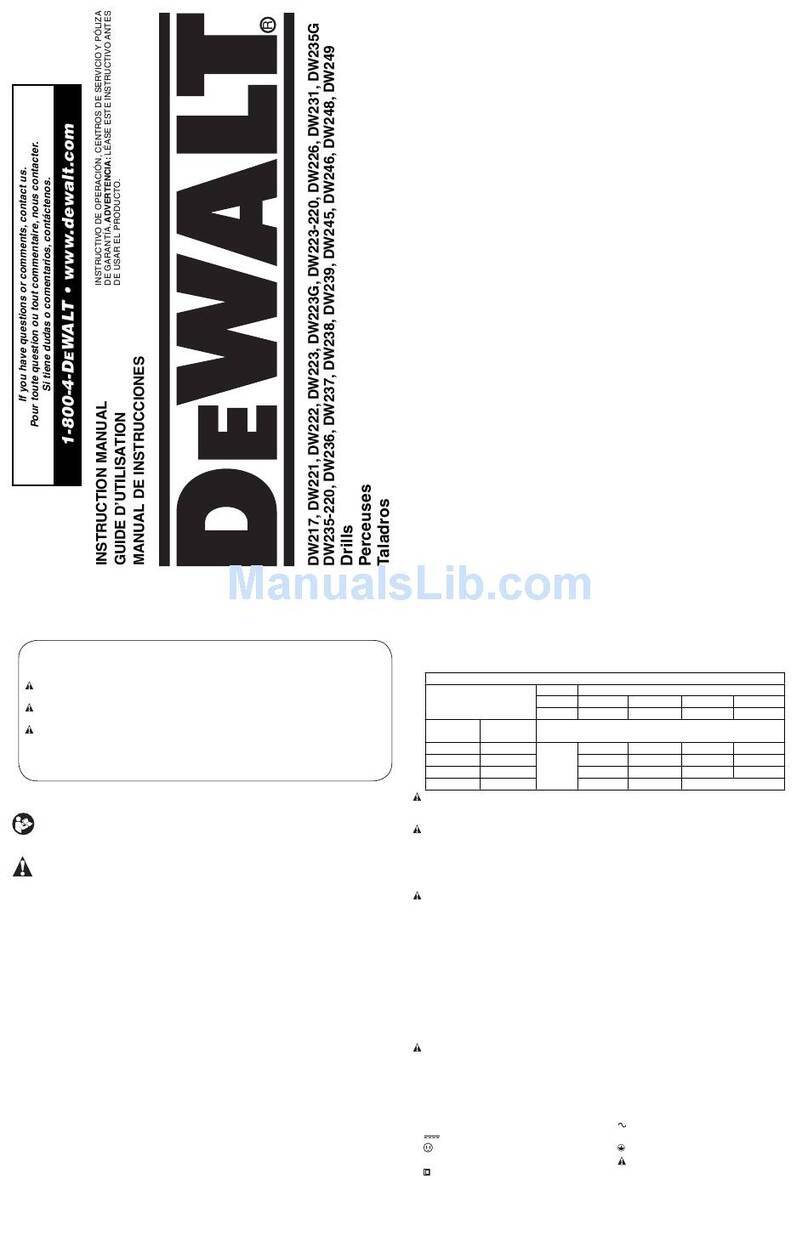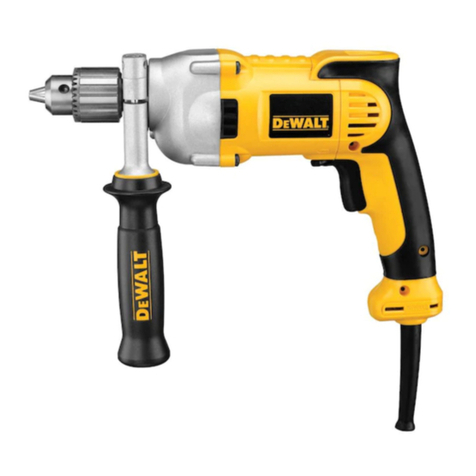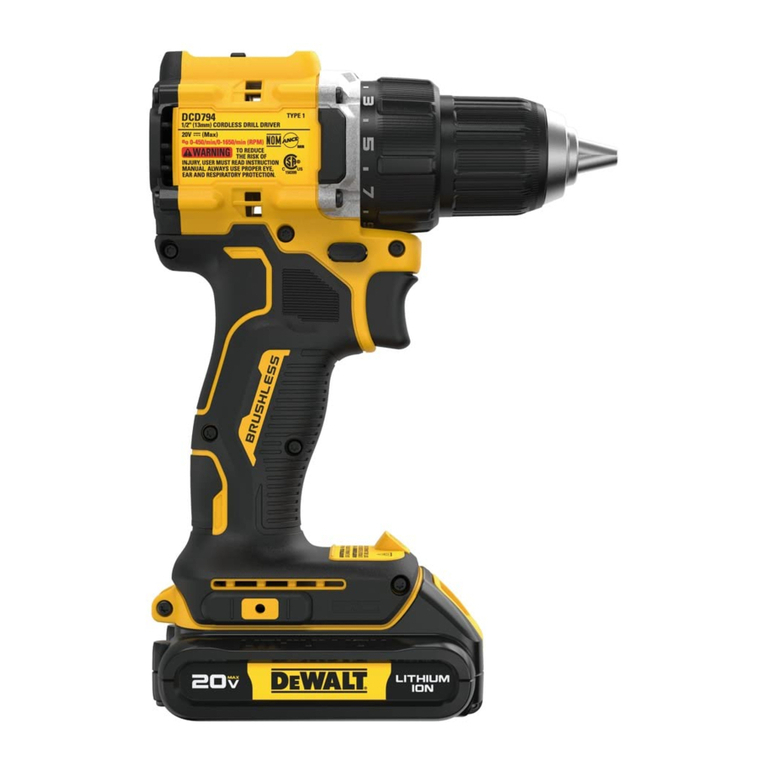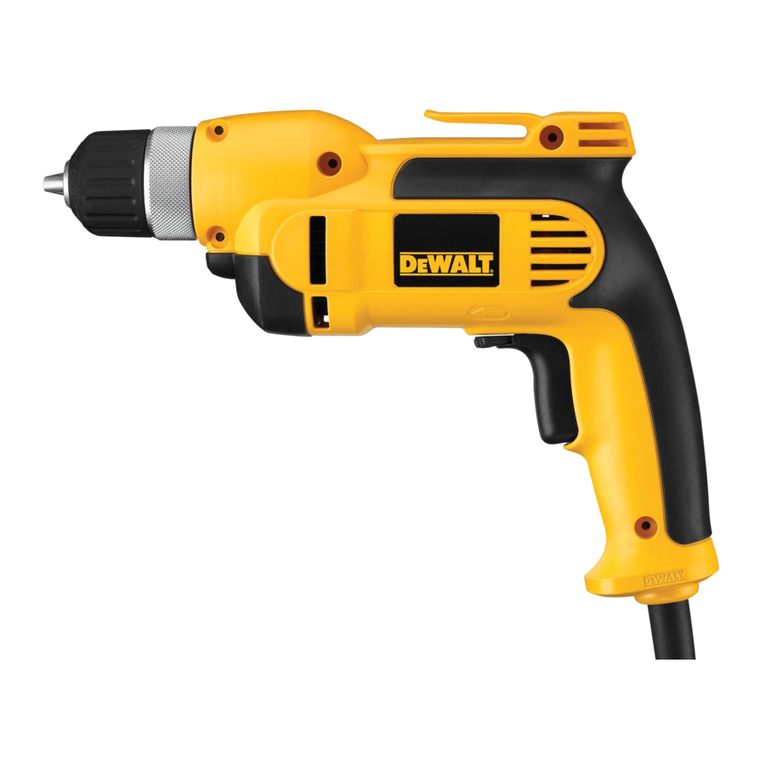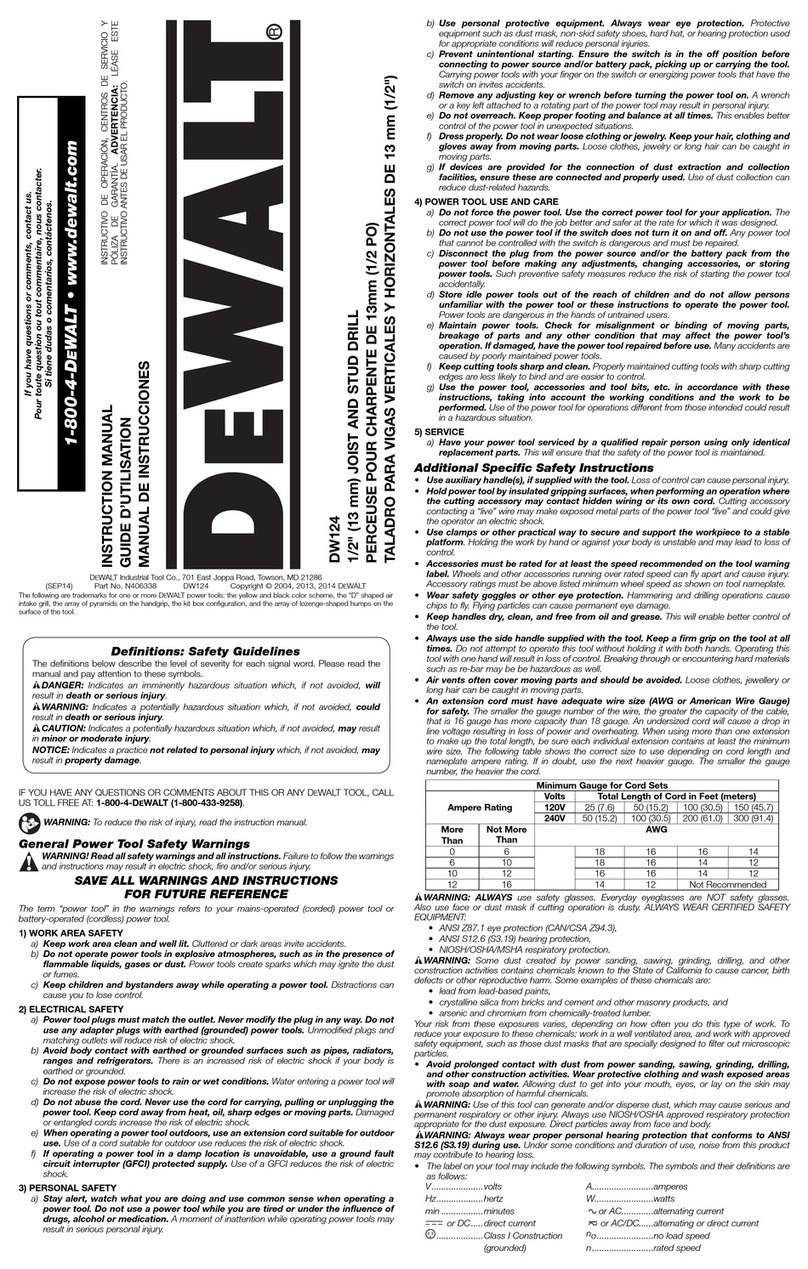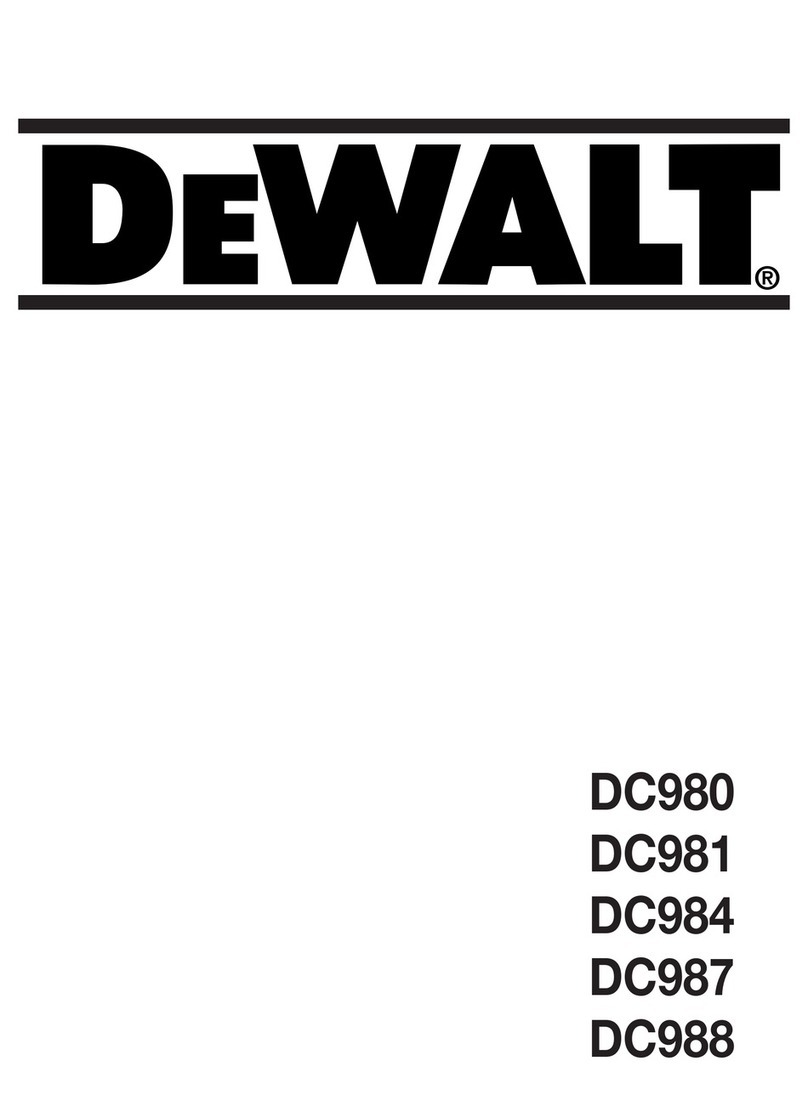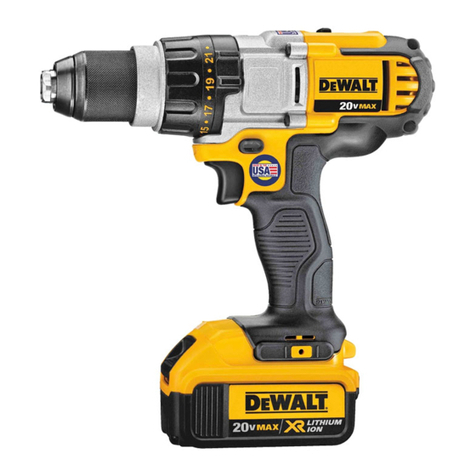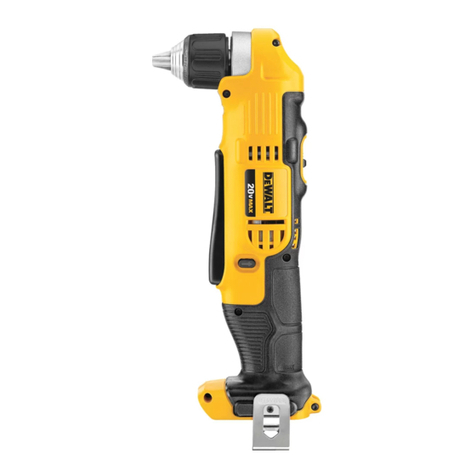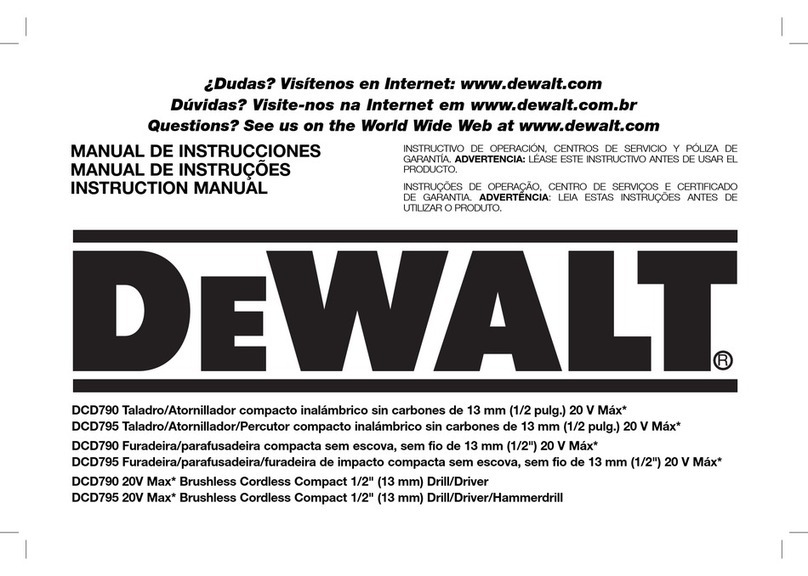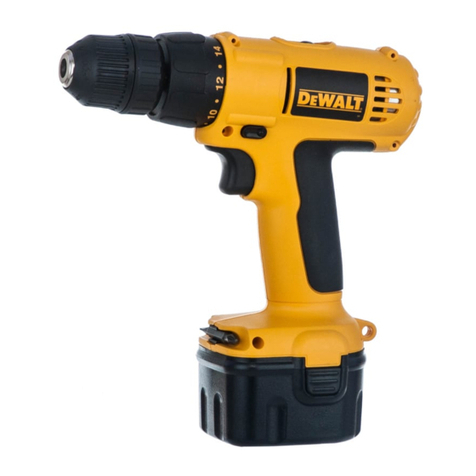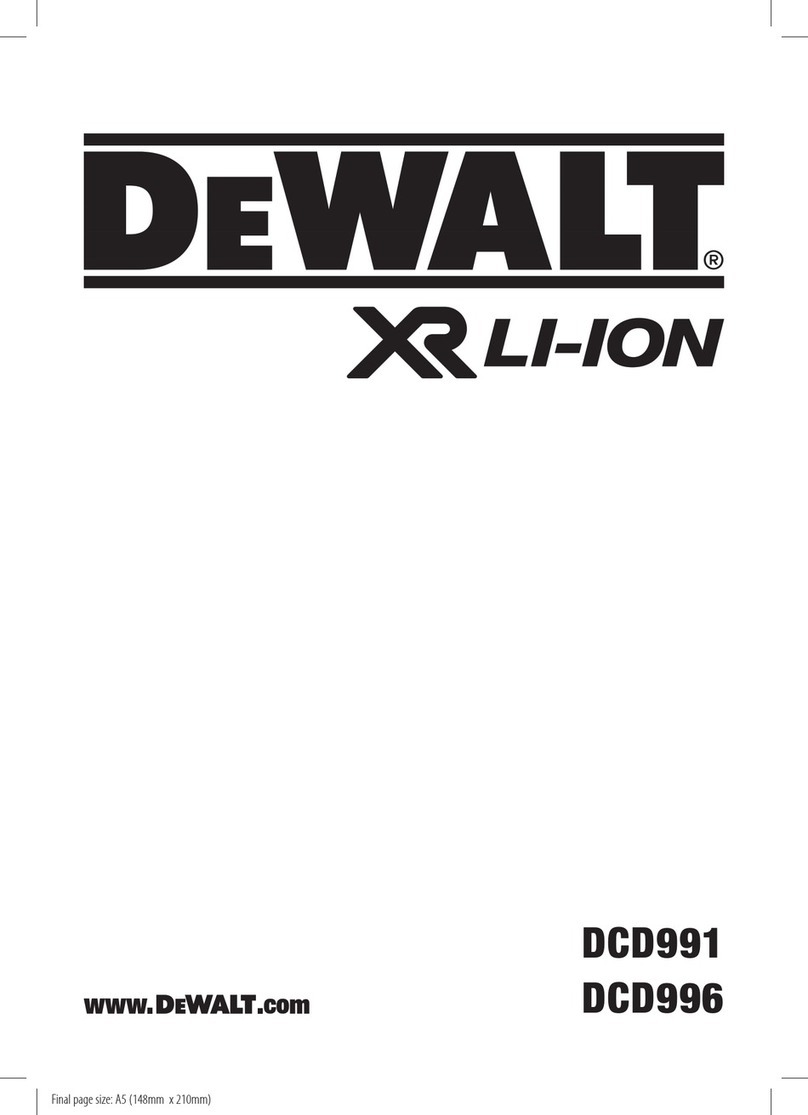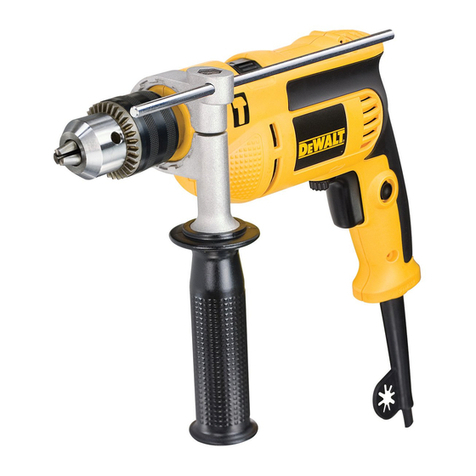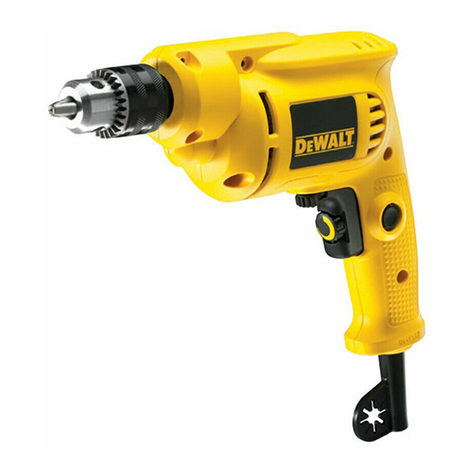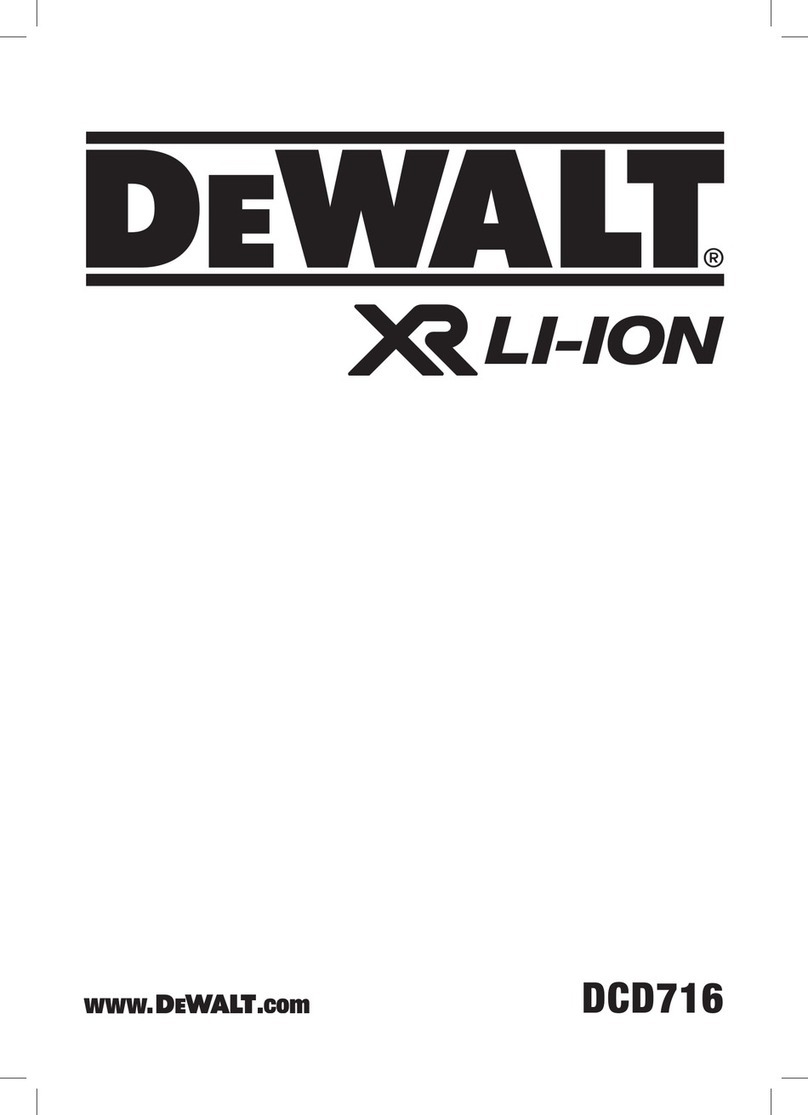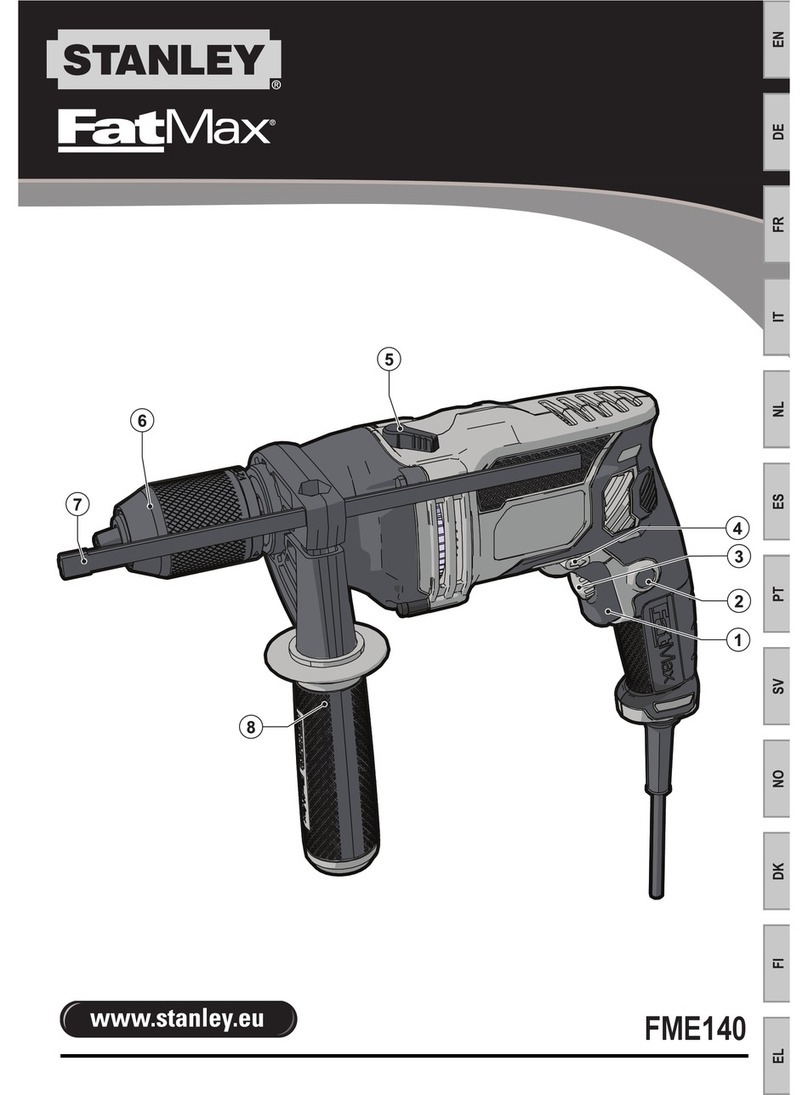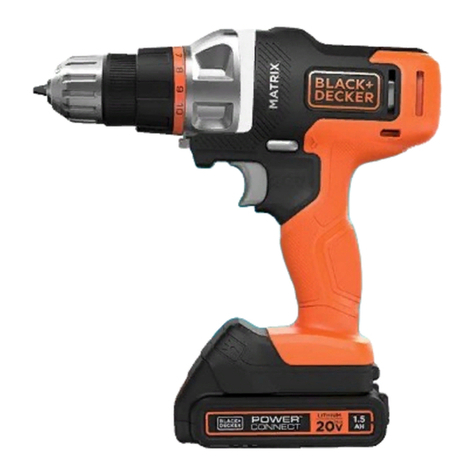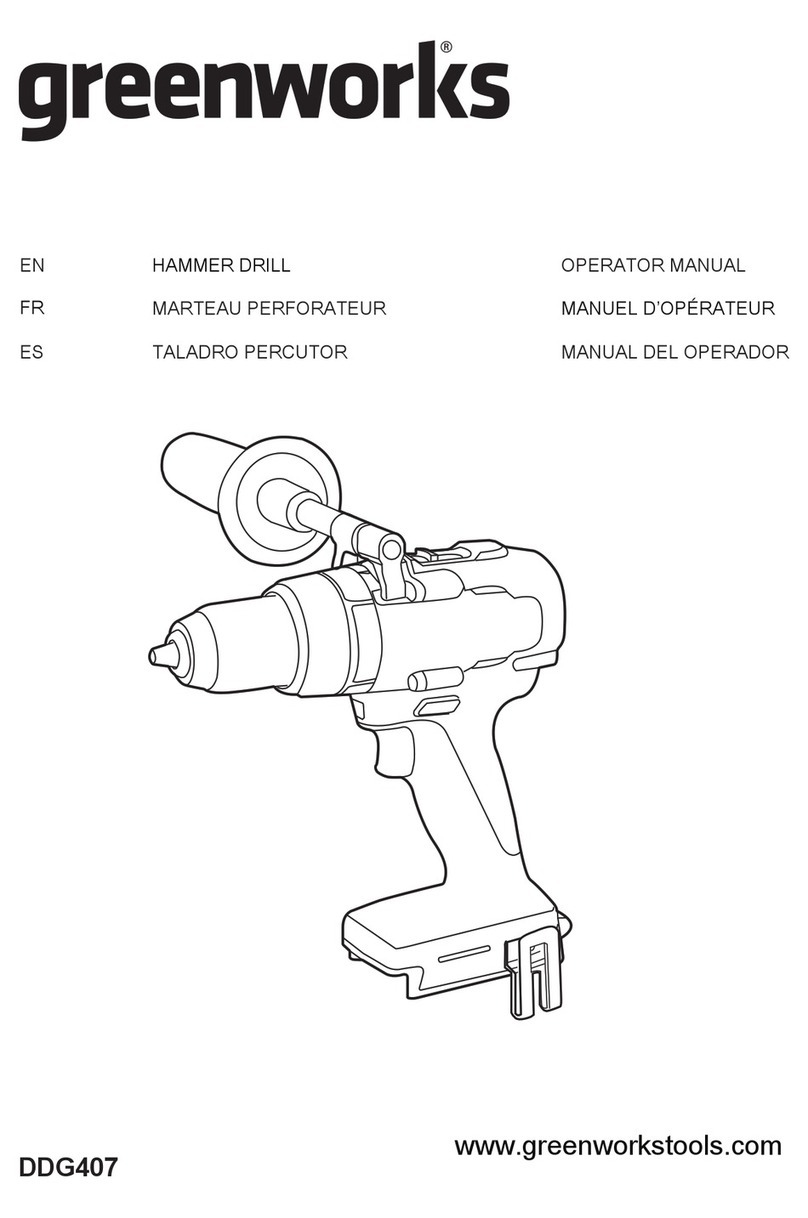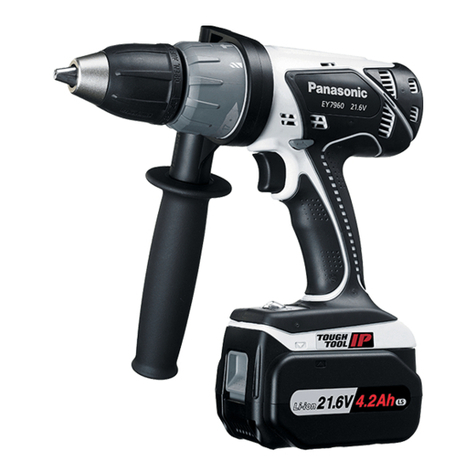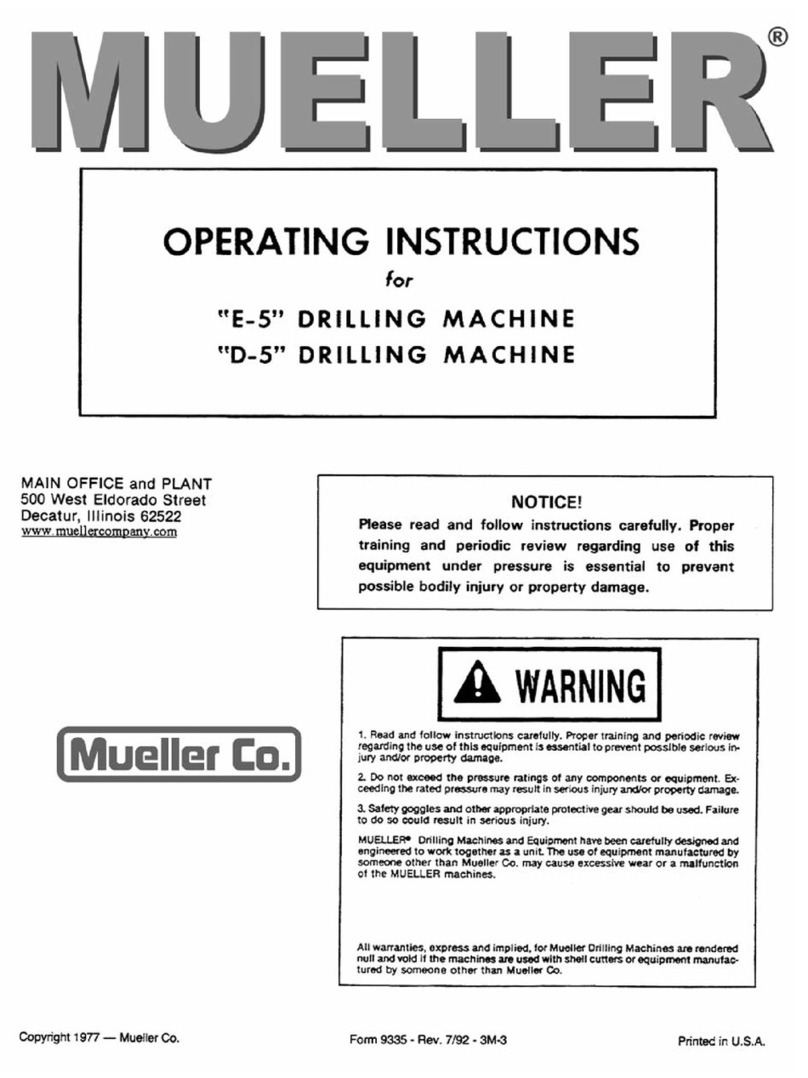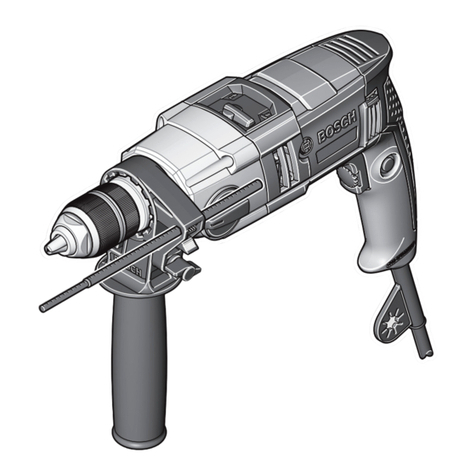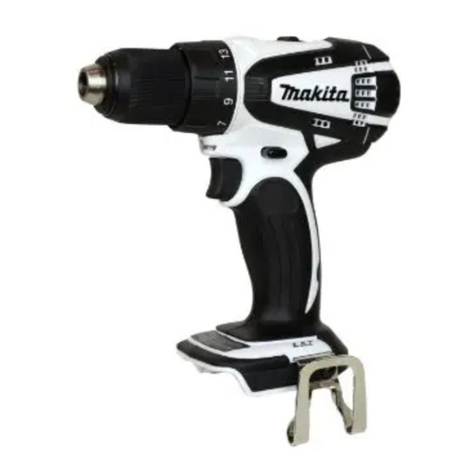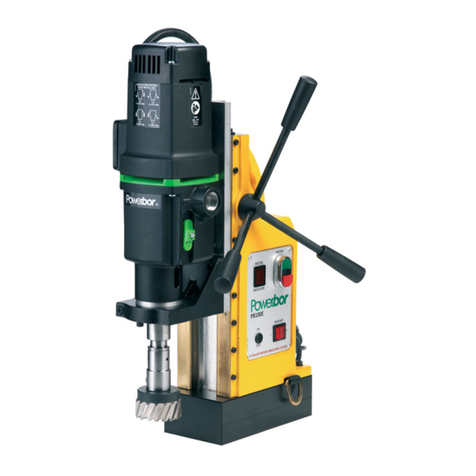• Do not overreach while operating the tool. Maintain a balanced
working stance at all times. When necessary, use only properly
positioned, safe, platforms and scaffolding. WORK SAFE.
• Wear gloves when touching hammer bits. Hammer bits and
tools get hot during operation.
CAUTION: DO NOT TOUCH ANY METAL PARTS OF THE TOOL
when drilling or driving into walls, floors or wherever live electrical wires
may be encountered! Hold the tool only by insulated grasping surfaces
to prevent electric shock if you drill or drive into a live wire.
CAUTION: Wear appropriate hearing protection during use.
Under some conditions and duration of use, noise from this product
may contribute to hearing loss.
CAUTION: When not in use, place tool on its side on a stable
surface where it will not cause a tripping or falling hazard. Some
tools with large battery packs will stand upright on the battery pack but
may be easily knocked over.
WARNING: Some dust created by power sanding, sawing, grinding,
drilling, and other construction activities contains chemicals known to
cause cancer, birth defects or other reproductive harm. Some
examples of these chemicals are:
• lead from lead-based paints,
• crystalline silica from bricks and cement and other masonry
products, and
• arsenic and chromium from chemically-treated lumber (CCA).
Your risk from these exposures varies, depending on how often you do
this type of work. To reduce your exposure to these chemicals: work in
a well ventilated area, and work with approved safety equipment, such
as those dust masks that are specially designed to filter out
microscopic particles.
•Avoid prolonged contact with dust from power sanding,
sawing, grinding, drilling, and other construction activities.
Wear protective clothing and wash exposed areas with soap
and water. Allowing dust to get into your mouth, eyes, or lay on the
skin may promote absorption of harmful chemicals.
1
English
• Maintain tools with care. Keep cutting tools sharp and clean.
Properly maintained tools, with sharp cutting edges are less likely to
bind and are easier to control.
• Check for misalignment or binding of moving parts, breakage
of parts, and any other condition that may affect the tools
operation. If damaged, have the tool serviced before using. Many
accidents are caused by poorly maintained tools.
• Use only accessories that are recommended by the
manufacturer for your model. Accessories that may be suitable
for one tool, may become hazardous when used on another tool.
SERVICE
• Tool service must be performed only by qualified repair
personnel. Service or maintenance performed by unqualified
personnel could result in a risk of injury.
• When servicing a tool, use only identical replacement parts.
Follow instructions in the Maintenance section of this manual.
Use of unauthorized parts or failure to follow Maintenance
Instructions may create a risk of electric shock or injury.
Additional Safety Rules for
Hammer Drills
• Hold tool by insulated gripping surfaces when performing an
operation where the cutting tool may contact hidden wiring.
Contact with a “live” wire will make exposed metal parts of the tool
“live” and shock the operator.
• Wear safety goggles or other eye protection. Hammering and
drilling operations cause chips to fly. Flying particles can cause
permanent eye damage.
• Wear ear protectors when hammering for extented periods of
time. Temporary hearing loss or serious ear drum damage may
result from high sound levels generated by hammer drilling.
• Always use the side handle supplied with the tool. Keep a firm
grip on the tool at all times. Do not attempt to operate this tool
without holding it with both hands.


